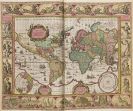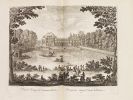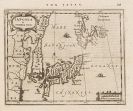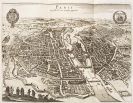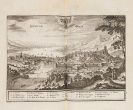
Claude Lorrain
Chamagne
1600 -
Rom
1682
The French painter Claude Lorrain, also known as Claude Gellée or Claude Le Lorraine, was born in Chamagne, Lorraine, in 1600. Little is known about his childhood, but that he first worked as a pastry baker. This profession soon took him to Italy. At the age of 13 Claude Lorrain lived in Rome, where he began an apprenticeship under Agostino Tassi, who designed illusionist ceiling paintings. It is therefore possible that Lorrain helped Tassi with the interior decoration of cardinal Mantalto's Villa Lante in Baganaia. In spring 1625 Lorrain returned to France for a short while. Upon his arrival in France, he worked on the frescoes of the Carmelite church in Nancy as assistant to Claude Deruet.
Subsequently he returned to Rome, where he then stayed for good. Around 1630 Claude Lorrain painted frescoes in the Palazzo Crescenzi in Rome. After that he restricted himself to easel paintings. With the exception of one assistant, Lorrain always painted alone. He was a pensive person who had an intuitive feeling for certain subjects. Lorrain's artwork dealt with biblical and mythological subjects, which he translated into beautiful and sensitive pictorial sceneries.
During these years, Claude Lorrain established himself as a leading landscape painter. He lived at the foot of a hill, housing the church Sanctissima Trinità dei Monti. From 1635 Lorrain kept records of his orders. He worked for the ruling Popes, their families and followers.
In 1635 he received a commission from Philipp IV of Spain, to whose palace Claude Lorrain contributed at least seven landscape pictures. Claude Lorrain adapted the character and atmosphere of his landscapes sensitively based on the religious subject he was dealing with. His large-scale paintings seduced him to use a lively, bold and monumental style, which contrasted his early, detailed and rather small pieces in northern tradition.
Claude Lorrain was never married, but in 1653 had a daughter, Agnese. From 1660 Lorrain's family life became more important, he then lived with two of his nephews. With increasing age, Lorrain produced fewer pictures, these few, however, were all the more refined and for an exclusive circle of clients. As the choice of subject was often left up to the clients, most of whom were very well educated or had sophisticated advisers, his motifs are rare and sometimes even unique in art history. He painted ten large pictures for the duke of Paliano, Lorenzo Onofrio Colonna.
Towards the end, his style became more epic and heroic. In his last picture ("Ascanius Shooting the Stag of Silvia") he once more returned to the epic world of Virgil's Aeneid.
On November 23, 1682 Lorrain died in Rome and one last time was taken up the hill, at whose feet he had lived for decades, to be buried in the the church of Sactissima Trinità dei Monti. Lorrain was a French baroque painter, who developed his own poetic-romantic style of classical landscape painting.
Would you like to sell a work by Claude Lorrain?
Infos for seller
